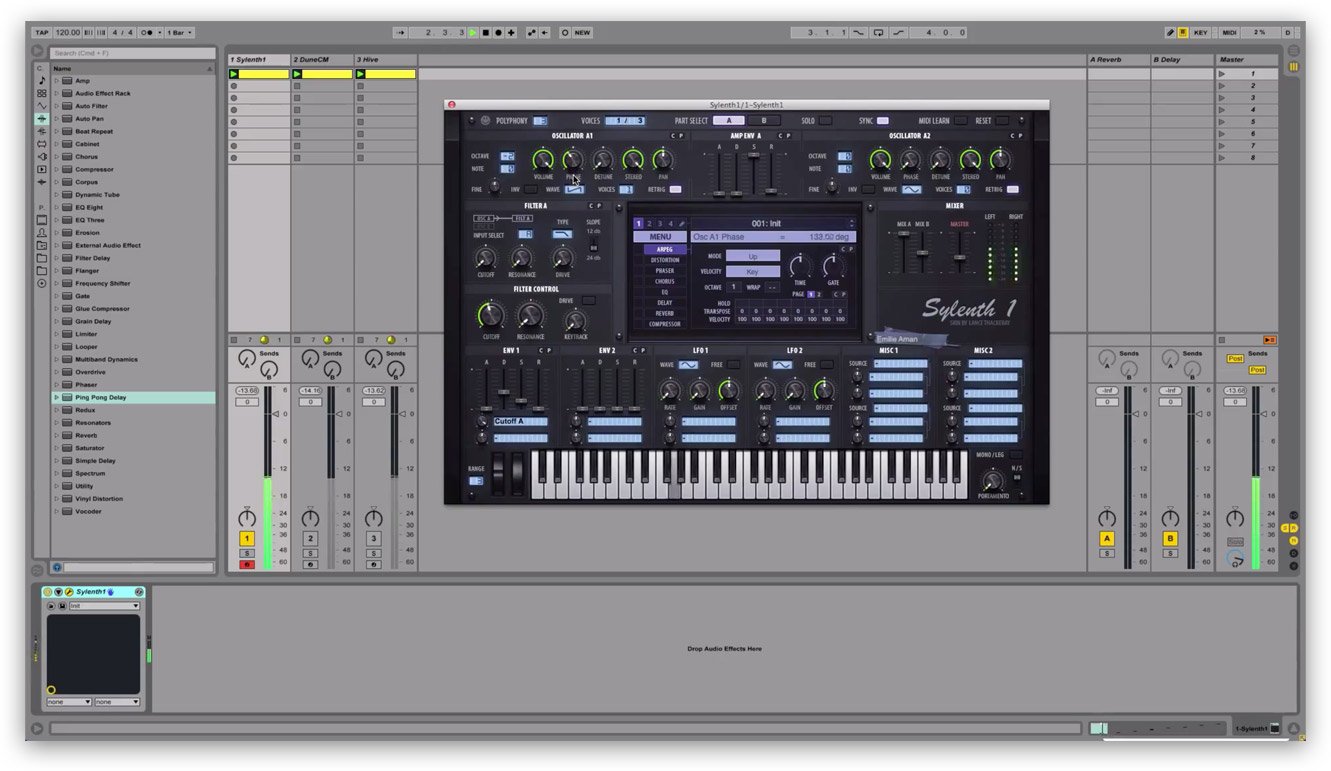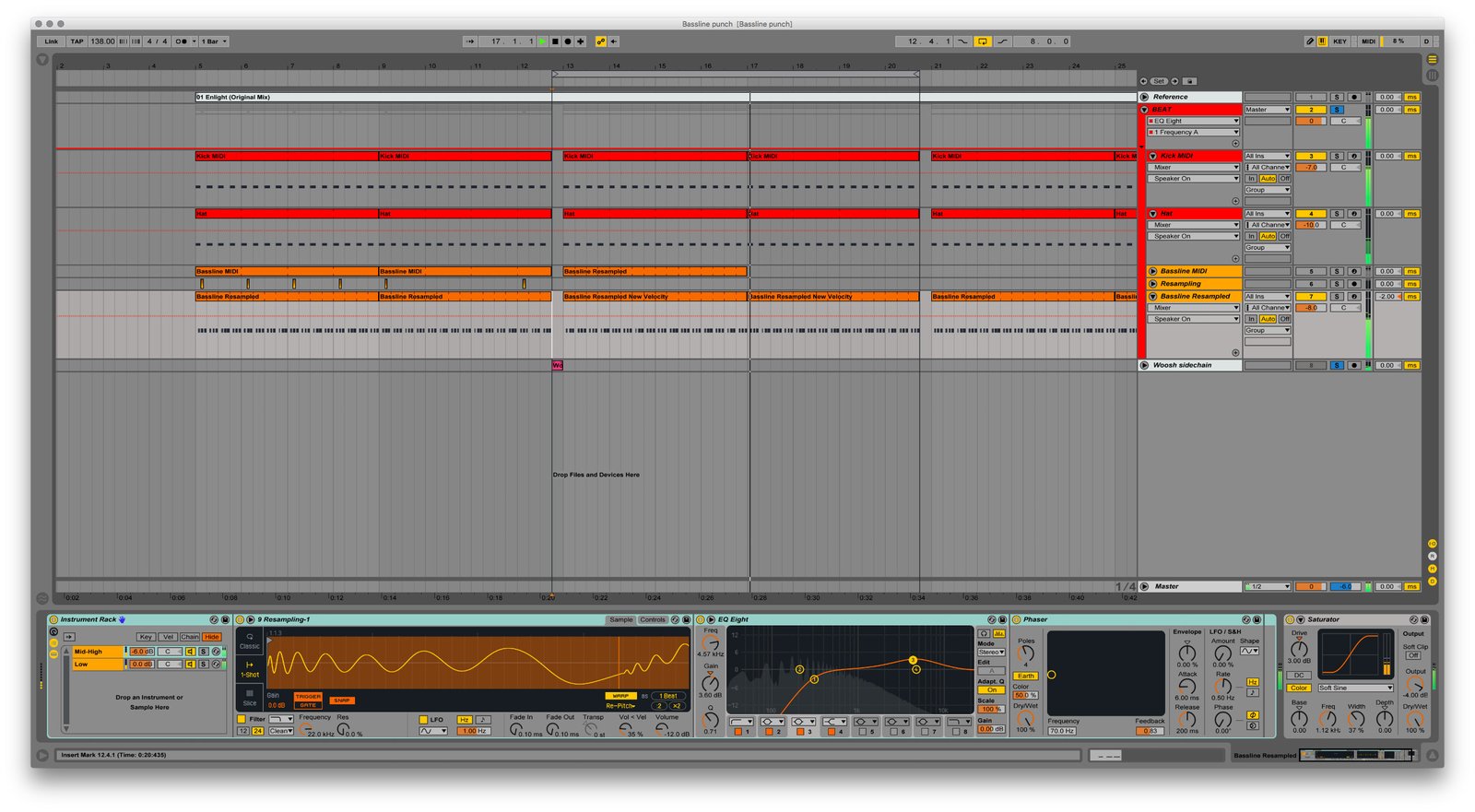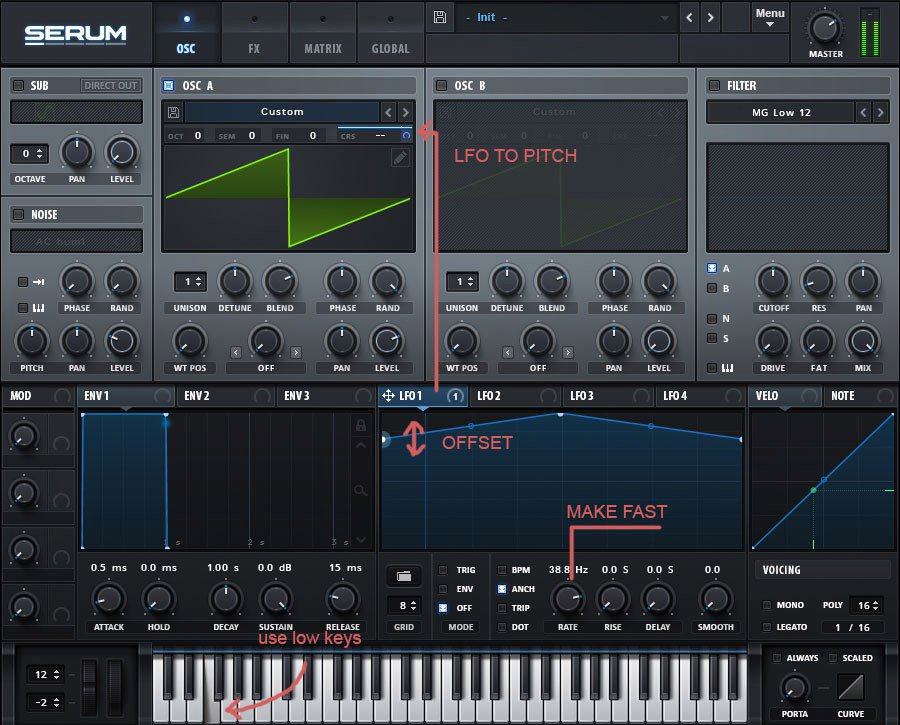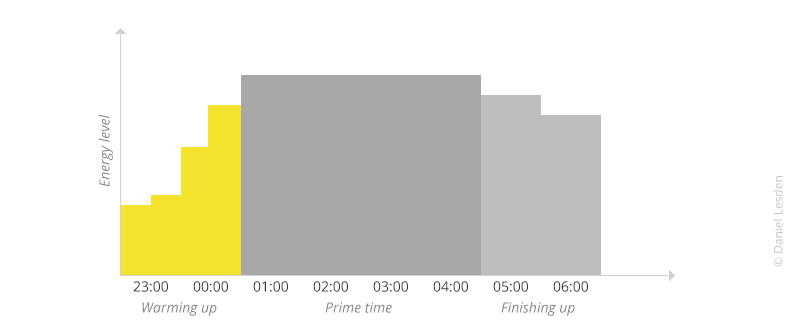How to make a punchy bassline
Another question about basslines I’m afraid. With Psytrance almost being defined by the “KbBB” bassline, it seems to be one of the most asked subject for questions. Mine is quite specific.
How do producers get the punchy attack on a bassline? No matter what I try, mine always seem to lack the initial punch of tracks such as Major7 & Vertical Mode – “Majormode” or Helber Gun – “Enlight”. Is it layers? Is it EQ? Is it a specific VST? Is it just down to ADSR envelopes and filters? I’d love to know how to get that sound with either Spire, Sylenth, Hive or Serum.
Hamish Strachan
Hamish, I don’t know for certain how Major7, Vertical Mode, or Helber Gun doing their basslines, but I have a couple of tips that might help.
Before putting a complex chain of compressors, equalizers, and other devices, I suggest checking your sound patch in the first place— oscillator’s phase to be more precise.
Phase can make your signal smooth or crispy, so be sure to set the best starting point position of your oscillator. I could write a lot about it, but in fact, Mr. PsiloCybian did an amazing video on the exact same topic. Just watch this video, he nailed it:

On EQ, cut the “mud” area around 300~500 Hz with a Bell filter and gently boost the highs. It would give you extra clarity and some sort of punchiness, too. I’ve written advice about bassline equalization, be sure to read it as well.
Psytrance bassline equalization

Saturator, Phaser, and various transient shapers are more considerable options for making your bassline more punchy. Keep in mind that these tools can also ruin your sound, so be gentle with its settings, don’t push it too hard. Especially Phaser since it messes up the signal phase.
Layering can help you with that. You can make one bassline layer with a High-cut filter to make a solid and consistent base, and then add one more bassline, this time with a Low-cut filter and extra processing such as Phaser. This way your low-end spectrum won’t be affected, hence it keeps the bassline pressure while adding punchy mid-highs.

Here’re two basslines for comparison:
The difference is subtle, yet huge. You can download these samples to your computer (right click on the play button → “Download linked file as...”), open it in Ableton, and click on the Solo buttons to make A/B test.
Let me know if it helps.
Fellow producers out there, how would you make your bassline more punchy?


Thanks Daniel.
Since asking you this question, I actually discovered the ‘phase’ trick myself. It does make a hell of a difference. You can see it better using a more visual synth like Serum or Spire, as you can see where the sound starts on the waveform... the trick is to get it to the peak of the soundwave.
Also, I have recently purchased the Waves “Infected Mushroom Pusher” plugin. This makes a big difference to basslines, I would recommend it to any psytrance producer, especially as it’s on offer right now for $29.
Personally, I’m not a fan of such kind of plugins with a huge “Magic” knob, especially since it’s advertised as “it just makes everything sound better”. In my humble opinion, this plugin is just a lazy version of compressor combined with a transient shaper and branded with Infected Mushroom logo to push it on the market.
That’s great if this plugin works for you, totally. Nevertheless, I’d suggest using a separate compressor, saturator, phaser or whatever depending on what you’re trying to achieve. This way you not only have more control and more predicted results, but it also gives a better understanding of each device.
Nice bassline Daniel,
I actually know for fact that Major 7 uses layered bass with the low bass being extremely punchy, like a staccato. He usually has a mid range bass mono and stereo. He hardly uses a compressor but might use a transient designer to add punch. Sometimes he uses what he calls an attack bass. But the biggest key is the track delay few milliseconds can bring more groove and punch.
I know is that X-noize (Bonen of major 7) use layering in bassline always
In your samples, “default bassline with no extra processing” means the output right from Sylenth? No equalizers and stuff? Or you just mean that you didn’t apply layering to this one?
@Arseny I meant without the layering, sorry if it confuses. The difference between these two examples above is subtle, mostly in mid-highs.
As for the kick drum, I can’t say for sure how I made this particular kick, but generally speaking I use “Kick” VST for most of my kick drums. Read more about in “3 ways to make a kick drum” blog
Can you show us how you did that kickdrum or which sample pack you used, to get an idea how to use the proper kick drum sample and how its sounds generally speaking of psytrance. :D
Do you have any idea how to make bassline like in Astrix Sahara its sounds super punchy. cant get it with serum or sylenth.